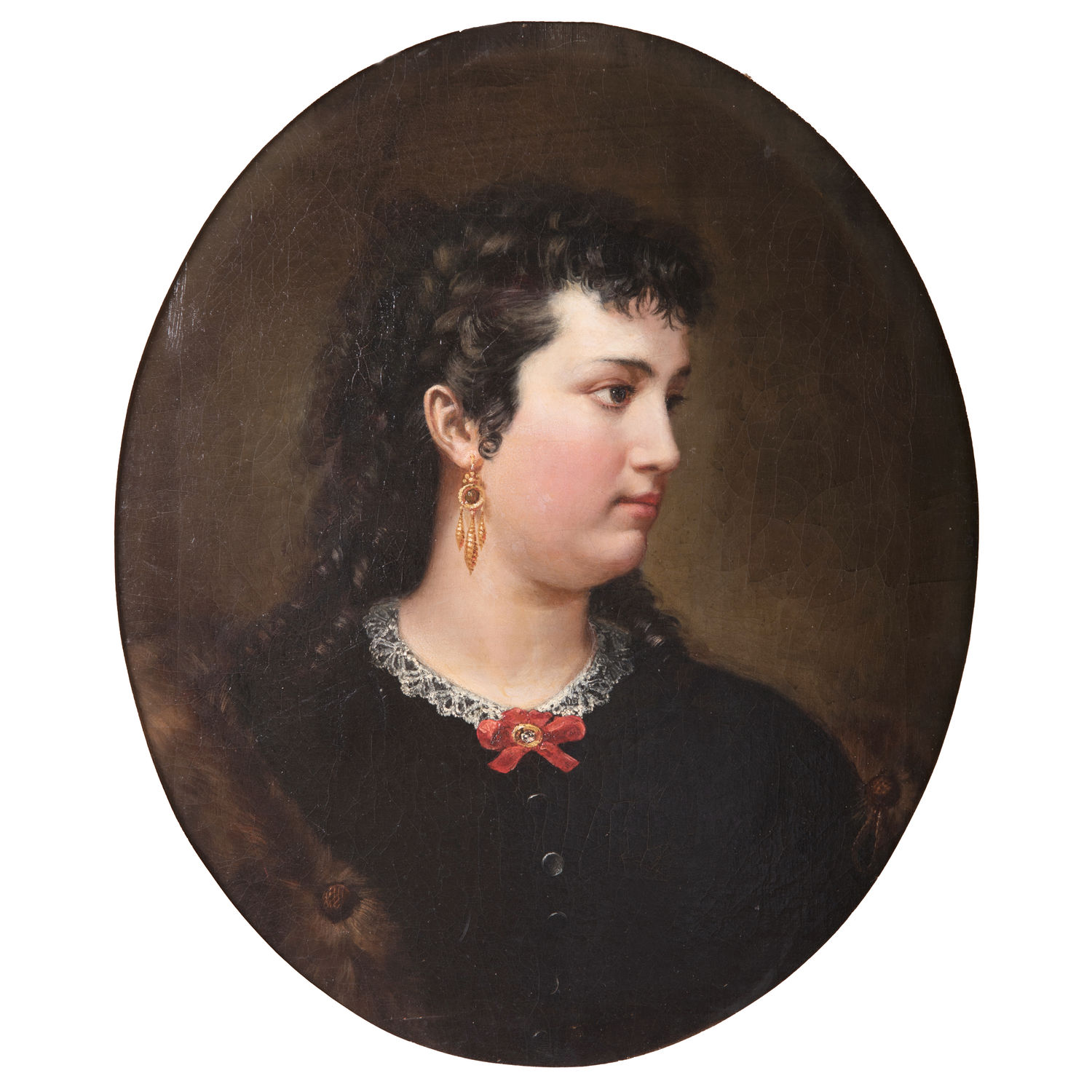
| Title | Lola Germon Brumidi |
| Artist/Maker | Constantino Brumidi ( 1805 - 1880 ) |
| Date | 1860 ca. |
| Medium | Oil on canvas |
| Dimensions | Sight: h. 24 x w. 20 in. (h. 60.96 x w. 50.8 cm)
Framed: h. 32 x w. 28 x d. 3.125 in. (h. 81.28 x w. 71.12 x d. 7.9375 cm) |
| Credit Line | U.S. Senate Collection |
| Accession Number | 31.00020.000 |
The young woman depicted in this portrait was the wife of Constantino Brumidi, the Italian-born artist who decorated the walls and ceilings of the U.S. Capitol from 1855 to 1880. Lola Germon Brumidi (1842–1918) occasionally modelled for Brumidi, and her features appear in his frescoes in the Capitol, most notably in the monumental The Apotheosis of Washington adorning the Capitol’s Rotunda.
This bust-length, nearly profile portrait depicts Lola as a young woman wearing a black day dress with a white lace collar. Her alabaster skin shows a gold pendant earring to fine advantage, and her hair is arranged in fashionable long ringlets. A photograph of Lola from the Brumidi photograph album captures her wearing the distinctive pendant earrings in her maturity in the year 1870.
In 1964, this unlabeled, unframed portrait was purchased by a husband and wife at an antiques shop on Maryland’s Eastern Shore. The portrait’s owners identified the sitter as Lola Brumidi, and more than 50 years later, the widow donated the portrait to the Senate.
The frescoes and murals of Constantino Brumidi (1805-1880) can be found throughout the U.S. Capitol. His most accessible and brilliant creations include the allegorical fresco The Apotheosis of Washington in the canopy of the Rotunda and the extensive frescoes and murals in the Brumidi Corridors. These hallways on the first floor of the Senate wing are some of the most ornate and creatively decorated public spaces in the nation. Inspired by Raphael's loggia in the Vatican, Brumidi's work in the corridors is unique in integrating classical imagery with patriotic American themes.
Born in Rome of Italian and Greek parentage, Brumidi trained in drawing, painting, and sculpture at Rome's prestigious Accademia di San Luca. By 1840, his artistic skills were put to good use when Brumidi and several other artists were commissioned to restore the historic Renaissance frescoes in the Vatican Palace. Brumidi also earned important commissions to decorate several churches and palaces in Rome. Following a pardon by Pope Pius IX for his role in Italy's republican revolution, Brumidi immigrated to the United States in 1852. Five years later he became a naturalized citizen.
In 1855, Brumidi was hired to decorate the Capitol extension with murals and frescoes. His Capitol frescoes were probably the first true frescoes to be painted in this country. Brumidi continued to embellish the walls of the Capitol for the next 25 years.
Brumidi's final years were spent painting the historic scenes in the Rotunda frieze. Proud of his achievements in America, the artist is reported to have remarked: "My one ambition and my daily prayer is that I may live long enough to make beautiful the Capitol of the one country on earth in which there is liberty." [1] He died on February 19, 1880.
1. Barbara A. Wolanin, comp., Constantino Brumidi: Artist of the Capitol (Washington, D.C.: Government Printing Office, 1998), 9.